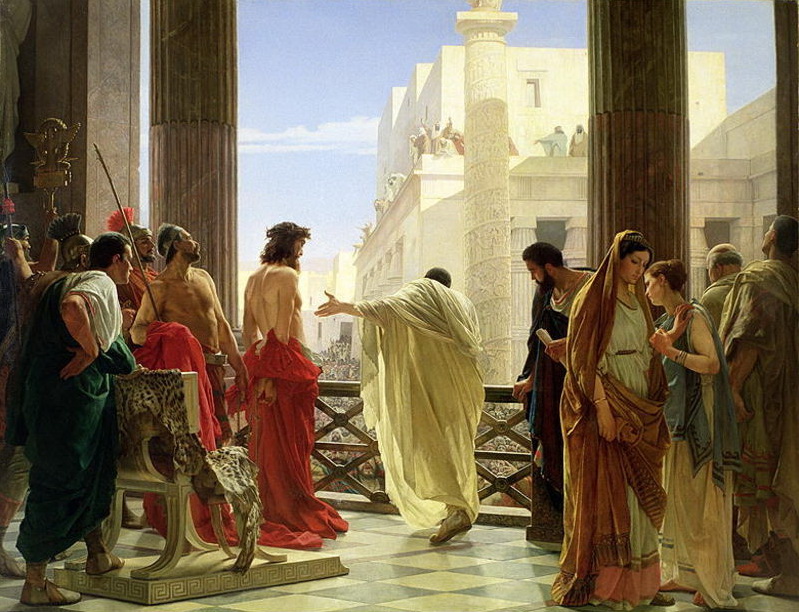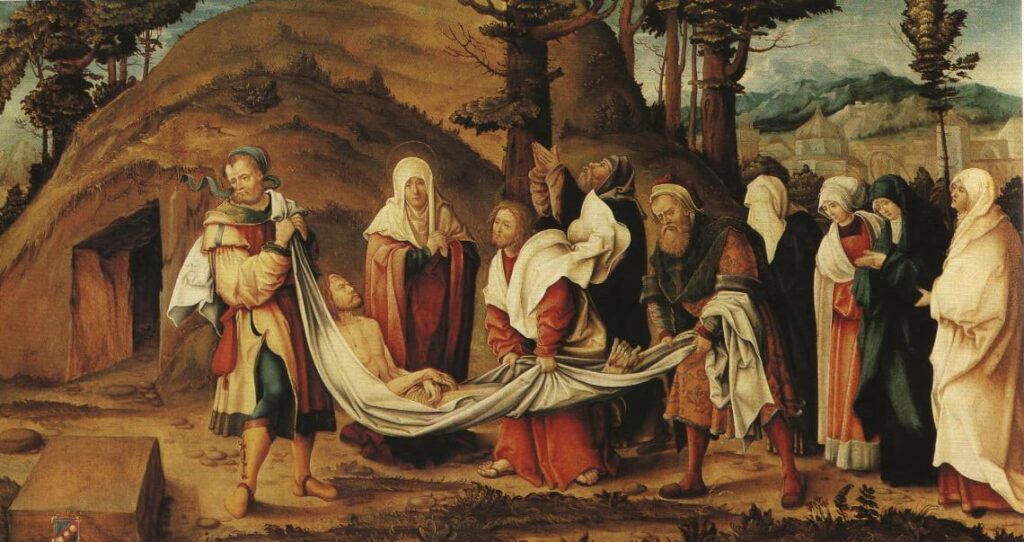The Church is supposed to be about love and worship. So, how did it end up in the middle of a war that lasted for three decades?
The Thirty Years’ War is considered one of the most devastating wars in Central Europe. It caused the death of 4 to 12 million people from 1618 to 1648. However, the death toll wasn’t isolated to just fighting, as people were also battling disease and famine.
Similar to many historical clashes, this one was rooted in different ideologies. Specifically differences in beliefs between the Catholic Church and Protestants. The origin of Christianity has always been tied to Catholicism. However, over the years, there has been plenty of dissension because of Catholic power, wealth, and the abuse of its authority.
Any opposition to the Catholic Church was labeled hereticism. In the 1500s, there were growing protests over various abuses of the Catholic Church, including the selling of indulgences. Despite critics, Catholic leaders were able to intimidate them and they multiplied.
By 1529, a group of leaders became known as the Protestants. They issued official statements against the Catholic Church with the goal of reforming the organization. The birth of Protestantism also paved the way for the battle that led to the Thirty Years’ War.
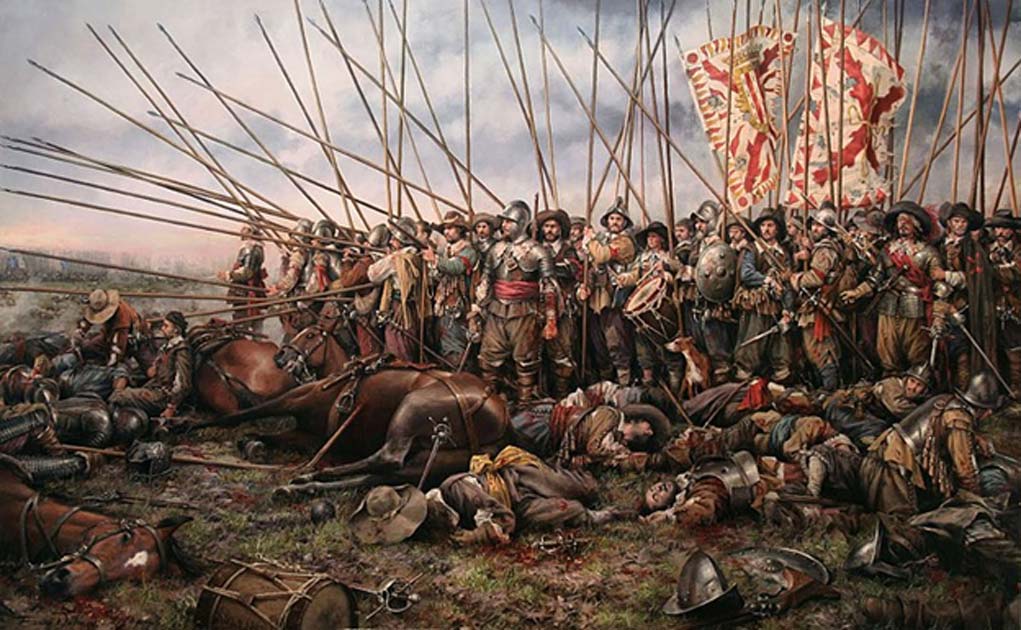
The Beginning
While grumblings against the Church started at the peak of the Middle Ages, they were often contained because the priests were very powerful. People who criticized the Church were excommunicated or branded heretics, which is a criminal offense.
In 1517, the Augustinian friar and theologian, Martin Luther, published his 95 Theses or, Disputation on the Power and Efficacy of Indulgences. This talked about the abuses of selling indulgences. He continued talking about it even after he was excommunicated by the Catholic Church and branded a notorious heretic.
Luther’s criticism of the Church also marked the birth of Protestantism even though the term had yet to be adopted. Luther is often referred to as the father of Protestantism.
The first Protestants were the six princes of the Holy Roman Empire and the 14 imperial free cities that officially issued a protest against the Diet of Speyer in 1529. The Diet declared an imperial ban on Luther’s teachings and regarded Lutherans as heretics and criminals.
But the Diet didn’t listen. They continued to ban Lutheran teaching as well as any type of dissension. Protestantism started growing. The number became so large that the Roman Catholic Church had no choice but to back down.
In the early 1550s, Holy Roman Emperor Charles V tried to force the first group of Protestants to return to Catholicism or die. However, Prince Henry II of France saw an opportunity for himself.
Prince Henry was known as a devout Catholic. But siding with Protestants for a time allowed him to seize the territories of Metz, Toul, and Verdun for France.
Charles V was forced to leave Germany and sign the Treaty of Passau in 1552, which allowed religious liberty. The leaders of every kingdom were then allowed to choose the religions for their territories through the 1555 Peace of Augsburg. A territory was either Lutheran or Catholic based on its ruler.
However, the religious accord was temporary.
The Thirty Years’ War wasn’t just religious in nature. Considering the Catholic Church’s influence over monarchies in Europe, the war was also political, dynastic, and territorial.
The War
The first battle broke out in 1618 and became known as the Bohemian Revolt.
It started when Emperor Ferdinand II of Bohemia, which now comprises most of the Czech Republic, forced his citizens to adhere to Roman Catholicism. This was despite the 1555 Peace of Augsburg.
Ferdinand II was a devout Catholic and was known as the counter-reformation emperor because he took it upon himself to enforce Catholicism on all his constituents.
What the emperor failed to realize was that Protestantism had already spread into European nations. Many leaders had embraced the new religion.
In defiance of his order, some Protestant leaders threw Emperor Ferdinand II’s representatives out of the window of his castle in 1618. He was also deposed as king of Bohemia and was replaced by Frederick V of the Palatinate, a Calvinist Protestant. The Bohemian Revolt raged from 1618 to 1620.
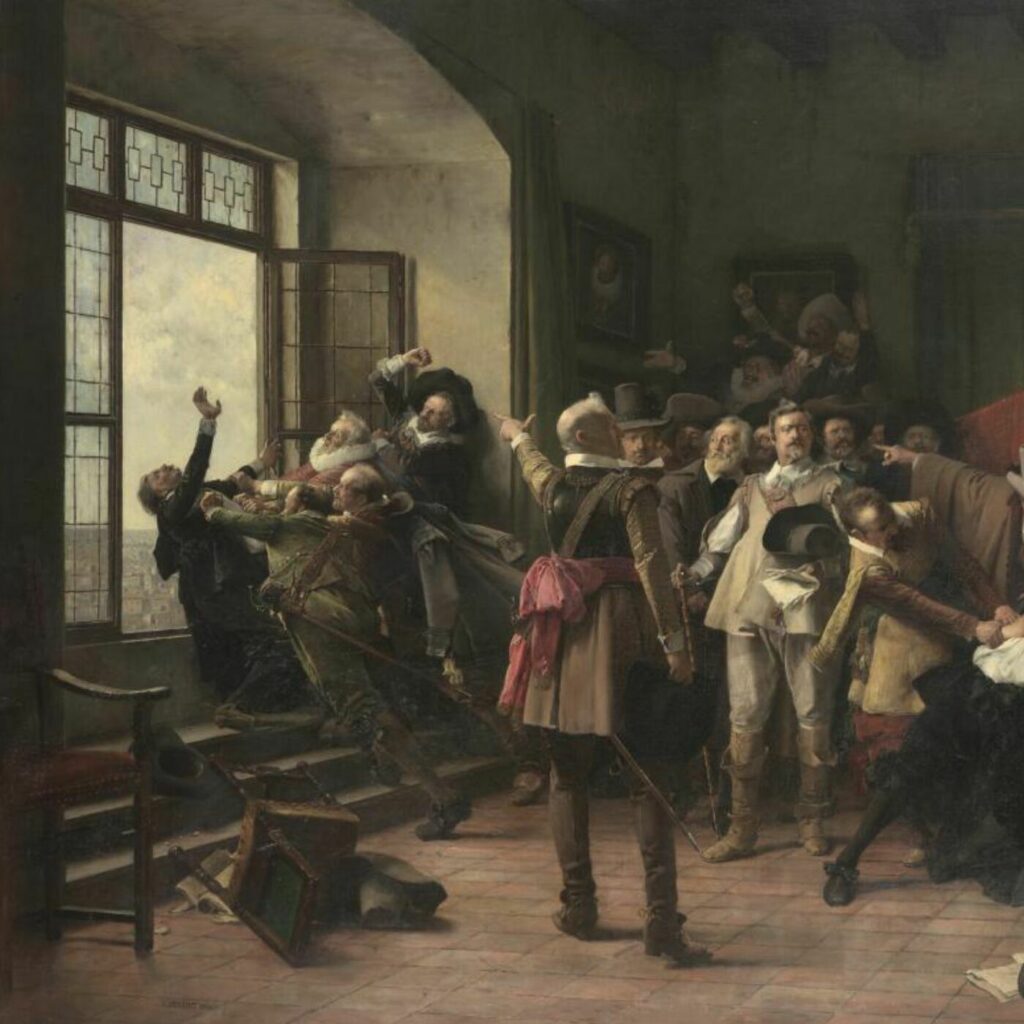
Even when the revolt ended, the war continued. The Bohemian Revolt caused the expansion of the war as it now involved the Dutch Republic and Spain.
The two were engaged in their own much longer battle—the Eighty Years’ War, where the Netherlands sought independence from Spain.
Denmark and Sweden, which had territories within the Holy Roman Empire, also intervened and became parties to the Thirty Years’ War. The war was no longer just an internal and religious conflict within Bohemia but a European conflict.
As the years went on, the war got bigger with more territories getting involved and the issue became deeper.
Catholic League Vs Protestant Union
Ferdinand II may have been deposed in Bohemia but he wasn’t left powerless. He started an alliance with Catholic princes in Germany and sought the support of King Phillip IV of Spain, Ferdinand II’s nephew who was also Catholic. In addition, he had the support of the Habsburg Dynasty.
History books refer to their alliance as the Catholic League. The league was composed of territories that mostly covered present-day Belgium, France, and Germany. The opposing side was known as the Protestant Union.
In 1619, the Catholic League financed an army of 25,000 soldiers and authorized Maximilian of Bavaria to use them as he deemed necessary. Spain and Austria also sent armies into Germany to help Ferdinand II.
Catholic Triumph
The first decade of the Thirty Years’ War was mostly a win for the Catholic League. Frederick V had been crowned but he was surrounded by Catholic territories. Plus, Catholic wealth was also unrestrainedly used for the war.
The powerful Habsburg Dynasty, a German royal family that had expanded territories in other European nations, also wanted a stake in the war for territorial reasons.
The Protestant Union was less bold between 1619 and 1629. Frederick V had support from England and France but they were unwilling to go to war at that time. The Dutch Republic also stayed neutral which allowed Spain to cross the country and reach the Rhine Palatinate in Germany.
The Catholic League and Ferdinand II’s army, supported by Spanish and Italian soldiers, invaded Frederick V’s territories. This resulted in the Battle of White Mountain.
The Battle of White Mountain was one of the most important in the Thirty Years’ War. There had been minor battles before that had been won by Protestants, but the White Mountain combat was a decisive one for the League.
It was also a product of Ferdinand’s perfect machination for gathering alliances. On November 8, 1620, the League fielded 24,800 men in White Mountain compared to the Union’s 23,000.
The battle was easily won which surprised Duke Maximilian. His League only lost 650 people compared to the 2,400 casualties of the Protestants.
But the tide would soon turn in favor of the Protestants through the leadership of Gustavus Adolphus.
A Win for the Protestants
Gustavus Adolphus was the King of Sweden from 1611 to 1632. In a little over two decades, he made Sweden an undeniable European power. He was also a key leader in the Thirty Years’ War.
In 1630, Adolphus and Sweden joined the war and sided with the Union. During his reign, Adolphus was deeply embroiled in the Polish-Swedish wars between 1600 and 1629. Sweden was on the verge of victory but Cardinal Richelieu of France stepped in to negotiate a truce. The six-year Truce of Altmark was signed in September 1629.
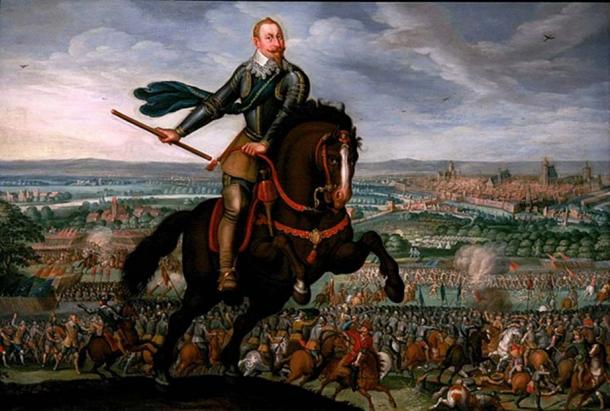
At the time, it seemed that the Cardinal wanted to end the war because religion is supposed to be about love and peace. However, the truth was more sinister. Richelieu stepped in to stop the war so that Adolphus would be free to join the Thirty Years’ War and support the Protestant Union.
Adolphus and his army successfully regained many territories for the Protestant Union. They also forced the Catholic League to back down in other territories. However, Adolphus, a beloved leader, fell in the Battle at Lutzen on November 6, 1632.
The Protestants won the battle but lost Adolphus. Along with the loss of a fantastic leader, the Swedes lost their fighting spirit.
The Swedes and their German allies lost the Battle of Nördlingen in 1634, which led to talks of a peace treaty between Ferdinand II and John George I of Saxony, a Lutheran leader.
The Halfway Mark and the Beginning of the End
Exhausted from the war, Saxony decided to end its participation in the war through the Peace of Prague, signed on May 30, 1635. Other German princes signed the treaty. However, the war continued.
Some said that the Peace of Prague ended the war of religion in the Thirty Years’ War. However, it continued as a power struggle in Europe.
One of the outcomes of the treaty was that Protestant territories in northeastern Germany were protected from the onslaught of the Catholic League.
The French were unhappy with the Peace of Prague because of territorial issues. The Swedes were also dissatisfied.
France officially entered the war in 1635. However, it failed to make progress in the first few years of its participation. It also fell into the hands of Spain in 1636. The French fought back and recovered. The war between the French Protestant Union, Catholic Spain, and the Holy Roman Empire remained in a deadlock for years.
As Spain focused its resources on the war, it didn’t realize that the Portuguese had been dissatisfied with the Iberian Union with Spain since 1580. The Portuguese ultimately revolted in 1640 and significantly weakened the Spanish army that was fighting in the Thirty Years’ War.
Denmark and Norway had been part of the early years of the Thirty Years’ War. Their motive was to gain German territories to make up for their losses in Sweden. However, both countries that fought against the Protestant Union were unsuccessful.
In 1643, the two countries rejoined the fray, but this time on the side of the Holy Roman Empire and the Habsburg family. In the same year, King Louis XIII of France died from a chronic illness. His heir was five-year-old Louis XIV, which created a vacuum that severely weakened France.
The capture of Prague Castle was the beginning of the end of the Thirty Years’ War.
Peace of Westphalia
In the last few years of the war, the Habsburg forces held many territories for the dynasty and the Holy Roman Empire. There was no end in sight but Maximilian was desperate to end the war. He made duplicitous deals in a bid for peace.
In 1647, the Habsburg army successfully defended Austria against Swede and French forces. Austrian territories were the only ones left under Habsburg control.
However, the Swedes successfully captured Prague Castle from the Holy Roman Empire in 1648 in what is now known as the Battle of Prague. It was the last major battle of the Thirty Years’ War.
The Swedes knew the war was winding down. So the purpose of the capture was to loot the castle and come home with wealth. After all, the Swedish army failed to capture the whole city.
Peace negotiations to end the war started as early as 1644. Understandably, it was hard to negotiate when there were too many warring parties. At one point, some 109 delegations joined the negotiations.
Prior to the Peace of Prague, the Protestant Union had the support of the following kingdoms:
- Bohemia (modern Czech Republic)
- Sweden
- Palatinate (lower Palatinate is now Rhineland-Palatinate and upper Palatinate is now part of Bavaria)
- Savoy (states ruled by the Savoy dynasty, which is now mostly Italy)
- Transylvania
- Dutch Republic
- Denmark-Norway
- Heilbronn League
- Hesse-Kassel (also known as Kurhessen today)
- Brandenburg-Prussia
- Saxony
Meanwhile, the Catholic League had the support of:
- Habsburg Monarchy (all territories under the rule of the Habsburg family)
- Spanish Empire
- Bavaria
After the Peace of Prague when the war was no longer just about religion, one side was represented by France, Sweden, the Dutch Republic, and Hesse-Kassel. The other side continued to have the Spanish Empire along with the Holy Roman Empire and Denmark-Norway.
The Peace of Westphalia was composed of three separate agreements:
- Peace of Munster between Spain and the Dutch Republic
- Treaty of Osnabruck between the Holy Roman Empire and Sweden
- Treaty of Munster between the Holy Roman Empire and France
Part of the treaties affirmed the 1555 Peace of Augsburg and the condition that every state would have the right to exercise their chosen religion. Religious minorities were also given the same liberty.
Conclusion
Christianity is the largest religion in the world but it has thousands of denominations. These denominations wouldn’t have prospered if it weren’t for the Thirty Years’ War and its treaties that allowed religious freedom.
Even though the war eventually became a battle for territories, it all started because Lutherans and Calvinists wanted to be as free as Catholics when it came to exercising their faith.
